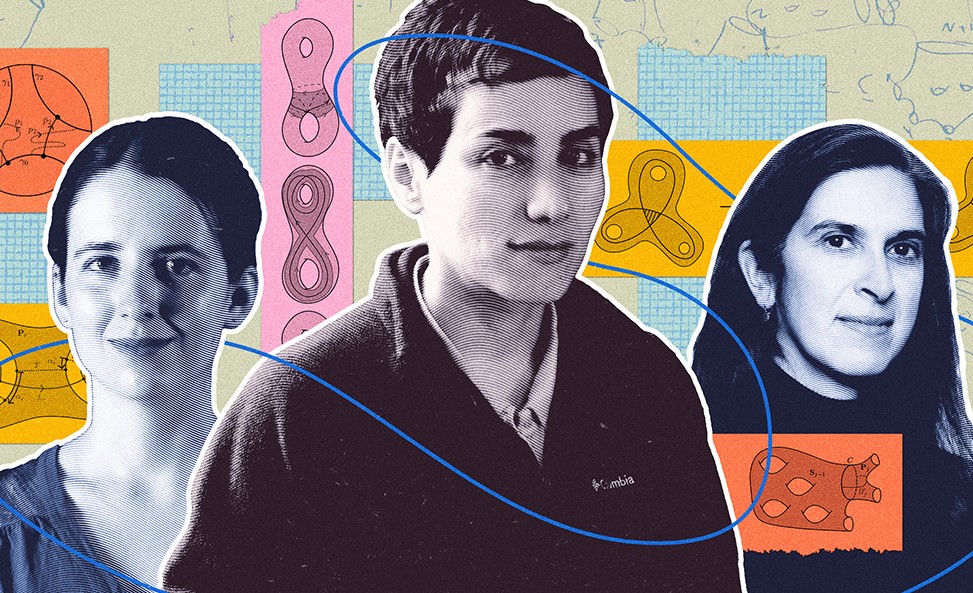Maryam Mirzakhani: The Iranian Mathematician Who Broke Barriers and Inspired Generations
In a world where formulas often seem cold and lifeless, Maryam Mirzakhani showed that mathematics can be a realm of creativity, intuition, and beauty. She was the first woman and the first Iranian to win the prestigious Fields Medal—the highest honor in mathematics—proving that groundbreaking achievements in science know no gender or geographical boundaries.
Among contemporary scientific figures, the name “Maryam Mirzakhani” shines brightly in the sky of mathematical knowledge. A brilliant mind with deep insight and unwavering perseverance, she pushed the boundaries of human understanding and earned admiration from around the globe.
Mirzakhani’s research in geometry and the dynamics of Riemann surfaces and moduli spaces unraveled long-standing mathematical problems and opened new horizons for future researchers. By combining geometric intuition with powerful analytical techniques, she demonstrated how beauty, elegance, and creativity could thrive even in the abstract world of mathematics.
A Journey from Dreams to Mathematical Excellence
Born in Tehran, Maryam was the third child in her family, with two brothers and one sister. As a young girl, she was passionate about storytelling and dreamed of becoming a writer. Her journey into mathematics began later than most—she didn’t seriously consider pursuing it until she entered Farzanegan High School under Iran’s National Organization for Development of Exceptional Talents (SAMPAD).
Initially, her performance in math was unremarkable; at one point, she scored just 16 out of 20 on an exam, which left her discouraged enough to tear up the paper. But with encouragement from her friend Roya Beheshti and hard work, she gradually found her footing. Their joint efforts to solve Olympiad problems marked the beginning of her transformation into a mathematical prodigy.
Her older brother played a key role in sparking her interest in mathematics, especially by introducing her to fascinating mathematical concepts. In 1994 and 1995, while still a teenager, Mirzakhani won gold medals at the International Mathematical Olympiad—scoring a perfect result in the second year. These early successes laid the foundation for her global recognition as a brilliant talent.
Academic Achievements and Research Contributions
After completing her undergraduate studies in mathematics at Sharif University of Technology, Mirzakhani moved to the United States to pursue her doctorate at Harvard University. Under the supervision of Fields Medalist Curtis McMullen, she completed her PhD in 2004 with a dissertation focusing on some of the most complex topics in geometry and dynamics.
Her doctoral thesis made significant contributions to the understanding of hyperbolic geometry, particularly in calculating volumes of moduli spaces. Her innovative approach combined algebraic geometry, topology, and dynamical systems in ways that had never been done before.
Following her PhD, Mirzakhani held academic positions at Princeton University and Stanford University, where she eventually became a full professor. Her work focused on areas such as differential geometry, hyperbolic geometry, dynamical systems, and the theory of Riemann surfaces. Among her major scientific achievements are:
- Solving longstanding problems in Teichmüller space and the dynamics of geodesics.
- Introducing a novel method for computing volumes in hyperbolic geometry.
- Making profound contributions to the understanding of moduli spaces, with implications in theoretical physics, especially string theory.
Honors and Legacy
In 2014, at the age of 37, Mirzakhani was awarded the Fields Medal for her outstanding contributions to the dynamics and geometry of Riemann surfaces and their moduli spaces. This historic achievement made her the first woman and the first Iranian to receive the award, marking a milestone not only in her personal career but also in the history of mathematics.
Tragically, Mirzakhani passed away on July 14, 2017 (23 Tir 1396), after a long battle with breast cancer. Her death was mourned worldwide, leaving a profound void in the global mathematical community.
In tribute to her legacy, May 12—the date of her birth—has been designated as the International Women in Mathematics Day, celebrating both her scientific contributions and her enduring inspiration to women in STEM fields.
A Lasting Inspiration
Maryam Mirzakhani’s life story is more than a list of accolades—it is a testament to courage, perseverance, and breaking down barriers. She proved that with passion, determination, and belief in oneself, anyone can reach the highest peaks of science, regardless of background or gender.
Today, her name lives on through scholarships, institutions, and initiatives named in her honor. For young girls and aspiring scientists, she remains a powerful symbol that dreams, curiosity, and resilience can change the world.
Her final Facebook post read: “The more I spent time on mathematics, the more excited I became.” And indeed, her excitement continues to inspire generations across the globe—reminding us all that brilliance has no borders, and genius knows no gender.
Isna


